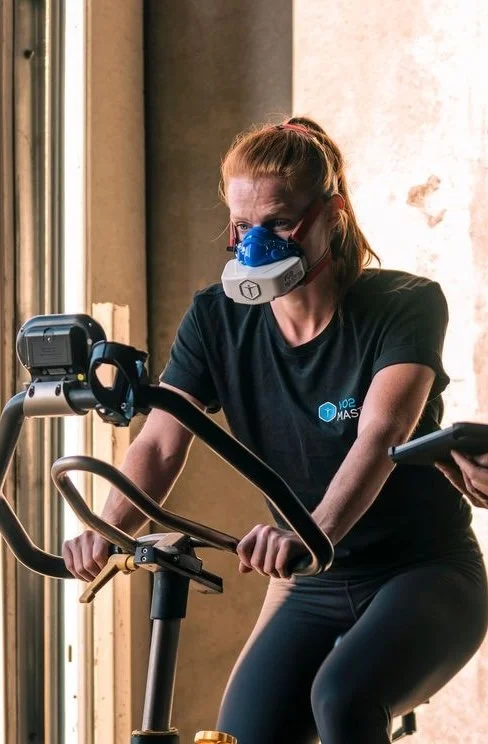VO2 Max Testing
VO2 max testing provides a comprehensive evaluation of your cardiovascular fitness and endurance capacity, offering key insights into how efficiently your body uses oxygen during exercise. This data allows you to monitor training progress, fine-tune your exercise programs, and optimize performance over time. The test can also help identify any potential limitations or risks related to heart and lung function.
With personalized results, you gain valuable guidance to support nutrition, weight management, and overall health. Our VO2 max test is conducted under direct physician supervision to ensure accuracy, safety, and expert interpretation tailored to your health goals.
Importantly, VO2 max is considered one of the strongest predictors of life expectancy—and unlike many other markers, it’s modifiable. By improving your VO2 max, you can actively reduce long-term mortality risk and enhance your healthspan.
For the most comprehensive and actionable insight into your health and performance, combining VO2 max testing with Inbody composition analysis and RMR testing offers a complete picture of your body’s composition, metabolism, and cardiovascular capacity.
What is VO2 max testing?
Our VO2 max test, performed with the advanced VO2 Master system, is a comprehensive assessment of your aerobic fitness and cardiovascular capacity. This non-invasive test measures the maximum amount of oxygen your body can utilize during intense exercise—an important indicator of your overall endurance and metabolic health.
In addition to your VO2 max score, the test provides personalized training zones based on your unique physiology. These zones help determine your optimal training intensities—so you can train smarter, not just harder, and get the most from your workouts.
What to Expect During the Test:
Preparation: You’ll begin by completing a brief health and activity questionnaire to ensure safety and optimize your testing experience. Wear comfortable workout clothes and bring athletic shoes.
Testing Protocol: The test is typically conducted on a treadmill or stationary bike, depending on your fitness level and preference. You will wear a lightweight mask connected to the VO2 Master system, which captures your breath-by-breath oxygen intake.
Exercise Phase: You’ll start exercising at a low intensity, gradually increasing the workload in stages. The VO2 Master continuously measures how much oxygen you consume and how efficiently your body is using it.
Duration: The test usually lasts 8–15 minutes and continues until you reach your maximum effort or the point of exhaustion.
Post-Test Review: After the test, Dr. Watson will analyze the data, including your VO2 max value, aerobic threshold, and other key performance indicators. These insights help tailor your fitness and health plan to your unique physiology. A copy of your results will be provided for you to keep.
Preparation Tips for Your VO2 Max Test:
* Eat your normal pre-workout snack/meal.
* Stay hydrated, but avoid excessive fluids right before the test.
* Wear comfortable, breathable workout clothes and supportive athletic shoes.
* We recommend minimizing strenuous exercise the day before/day of to avoid soreness during testing
* Get a good night's rest before your appointment.
* Inform us of any medications you are taking or recent illnesses.
Already Booked?
References:
Blair SN et al. (1989)
Title: Physical fitness and all-cause mortality
Journal: JAMA
Summary: This landmark study showed that higher cardiorespiratory fitness (VO2 max) was strongly associated with lower all-cause and cardiovascular mortality in men and women.
PubMed ID: 2795824
Kodama S et al. (2009)
Title: Cardiorespiratory fitness as a quantitative predictor of all-cause mortality and cardiovascular events: A meta-analysis
Journal: JAMA
Summary: This large meta-analysis found that each 1 MET (3.5 mL/kg/min) increase in VO2 max was associated with a 13% lower risk of all-cause mortality and a 15% lower risk of cardiovascular events.
PubMed ID: 19454641

